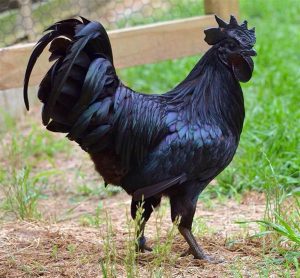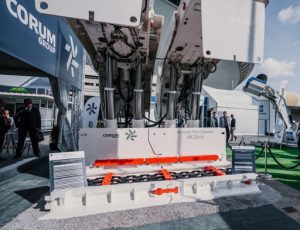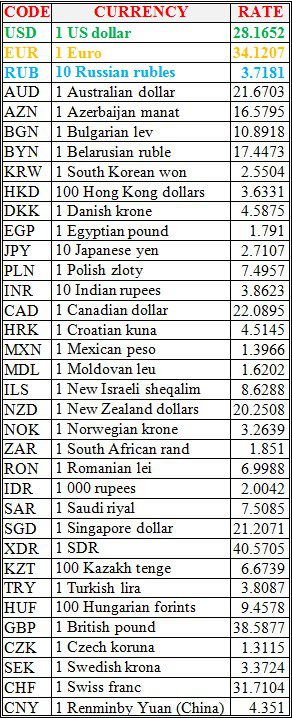
Myronivsky Hliboproduct (MHP) sold 174,260 tonnes of poultry in October-December 2020, which is 10% more than in the same period in 2019.
According to the company’s report on the London Stock Exchange, poultry sales as a whole grew by 4% for the year, to 698,020 tonnes.
MHP clarified that poultry exports in the fourth quarter rose by 8%, to 94,710 tonnes, and in general for the year by 5%, to 373,730 tonnes.
According to the report, the average price of one kg of poultry last year (excluding VAT) decreased by 5% in hryvnias from 2019, to UAH 36.11, and in dollars – by 9%, to $ 1.34. In the fourth quarter, the average price was UAH 38.49, or $ 1.36, which, respectively, is 11% more and 5% less than in the fourth quarter of 2019.
“The 12-month 2020 average chicken meat price was UAH 36.11 ($ 1.34), which is 5% lower in hryvnia terms (9% less in dollars) compared to chicken price in 12 months of 2019, mainly driven by the product mix change in exports (significant decrease in sales of fillet to the EU and increased sales to MENA) and weaker prices on breast fillet in EU as many global competitors experienced reduced demand, which resulted in excess stocks,” the report says.
The company also clarified that Slovenian-based Perutnina and its production in Croatia and Serbia, whose figures will now be given separately as a European operating segment, sold 15,170 tonnes of chicken in the fourth quarter, which is 7% more than in the fourth quarter of 2019. In general, for the year its sales amounted to 63,010 tonnes against 59,800 tonnes in 2019, while prices for European chicken in the fourth quarter decreased by 6%, to EUR2.48 per kg, and for the whole of 2020 by 4%, to EUR2.52 per kg.
“After a temporary decrease in utilization of poultry production capacity in Q1 (by 10% from February to the end of March 2020 as a result of the avian influenza outbreak in Ukraine), since the beginning of Q2 all the company’s poultry production facilities have been operating at full capacity. There were several outbreaks of the avian influenza in Ukraine in December 2020, however, the company continued to export poultry meat to its major markets (except to the EU banned market). None of MHP poultry complex were affected with avian influenza by the time of pre-close trading update release,” according to the document.
“Poultry production volumes in Q4 2020 remained relatively stable, constituting 189,687 tonnes. In 2020 poultry production volumes were relatively stable and constituted 731,279 tonnes,” the company said.

Corum Group (DTEK) plans to complete the supply of 400 cast components for powered supports to the largest mining company in Europe Polska Grupa Górnicza SA (PGG) by the end of March this year, Corum wrote on Facebook.
According to the statement, the first batch under the contract, the cost of which was not disclosed, has already been supplied to the customer. Cast components are produced by Corum Svitlo Shakhtaria plant (Kharkiv).
“These components will cover the Polish partner’s need for missing components for the production of powered roof support sections,” the statement said.
Corum recalls that it has been cooperating with PGG since 2018, and three mines of this company (Sośnica, Piast-Ziemowit and Mysłowice-Wesoła) use more than 400 Corum support components.
Corum Group is part of the energy company DTEK Energy and is the largest manufacturer of mining equipment in Ukraine.
The key clients of the company are 14 largest mining holdings, whose assets include 150 mines and open pits.
National bank of Ukraine’s official rates as of 28/01/21

Source: National Bank of Ukraine

The American Chamber of Commerce in Ukraine asks Volodymyr Zelensky to take personal control over Ukraine’s fulfillment of the memorandum obligations between the country’s government and renewable energy investors, which were legislatively enshrined in 2020.
Such a request is contained in a letter from President of the American Chamber of Commerce Andy Hunder to the head of the Ukrainian state dated January 26.
“We ask you to take personal control over the implementation of the provisions of Law No. 810-IX and the fulfillment of obligations under the current legislation and refrain from taking decisions that undermine earlier agreements between the state and investors,” the text of the letter said.
As Hunder recalled, on August 1, 2020, the law on the amendments to certain laws of Ukraine on improving the conditions of support for electricity production from alternative energy sources (No. 810-IX) came into force.
Adoption of Law No. 810-IX was aimed at improving the feed-in tariff’s sustainability and electricity market liquidity by enshrining in law the provisions set out in the Memorandum of Understanding, signed on June 10, 2020 by the Cabinet of Ministers, the Energy Ministry, the National Energy and Utilities Regulatory Commission (NEURC) and renewable industry associations.
Inter alia, the provisions of Law No. 810-IX envisaged 20% co-financing from the state budget and issuance of government domestic loan bonds to cover the deficit in payments to renewable energy producers. However, none of these mechanisms was implemented either in the state budget for 2021 or using debt financing instruments.
“Accordingly, the American Chamber of Commerce members expected that the government will fulfill its obligations under the legislation and the memorandum by allocating at least UAH 9 billion from the attracted UAH 10.25 billion of credit funds to pay off 40% of the debt to renewable energy producers accumulated as of August 1, 2020 in the amount of UAH 22.4 billion. However, on January 16, 2021, the NEURC issued the Guaranteed Buyer an instruction to allocate not less than 50% of the funds received from Ukrenergo under the loans provided by state-owned banks for repaying other debts,” Hunder said.
He said that such NEURC decision combined with a lack of actions by the government to implement Law No. 810-IX is a clear sign of Ukraine’s unwillingness to fulfill its commitments to private investors.

The new supply of office premises located on the left bank of Kyiv in 2021 will amount to only about 20,000 square meters, according to the international consulting company CBRE Ukraine (Kyiv).
According to the company’s report presented during the webinar entitled “Retail Real Estate Market Analytics” on January 27, about 180,000 square meters of new office space are expected to be released on the capital market in 2021, of which only 20,000 square meters are located on the left bank of Kyiv. Among them are office buildings on Bazhana Avenue (11,000 square meters and 6,000 square meters) and the Piramida business center (2,600 square meters).
“A piece of advice to developers: you need to pay attention to the left bank, as 35% of people working in the center live there. The lack of premises on the left bank also affects the fact that people do not want to return to offices, as it takes a lot of time to go to the center. It would be good to develop the left bank as well, which is now happening gradually,” Head of Brokerage at CBRE Ukraine Anna Silvestrova said at the webinar.
According to her, projects with an area of about 20,000 square meters, located near the metro, are optimal for the left bank.
At the same time, rental rates for high-quality class A premises on the left bank will inevitably be lower than for similar properties on the right bank.
“This is unprofitable for developers, since the return on their investment will be much longer and a little more painful,” Silvestrova said.
She said that someone should launch a project that will equalize the rights of the two banks. “I think it is faster to build a business center than the fifth or sixth bridge,” the expert said.
At the same time, CBRE predicts a reduction in new supply in 2023-2024, since many projects in the early stages of construction were canceled or suspended last year.